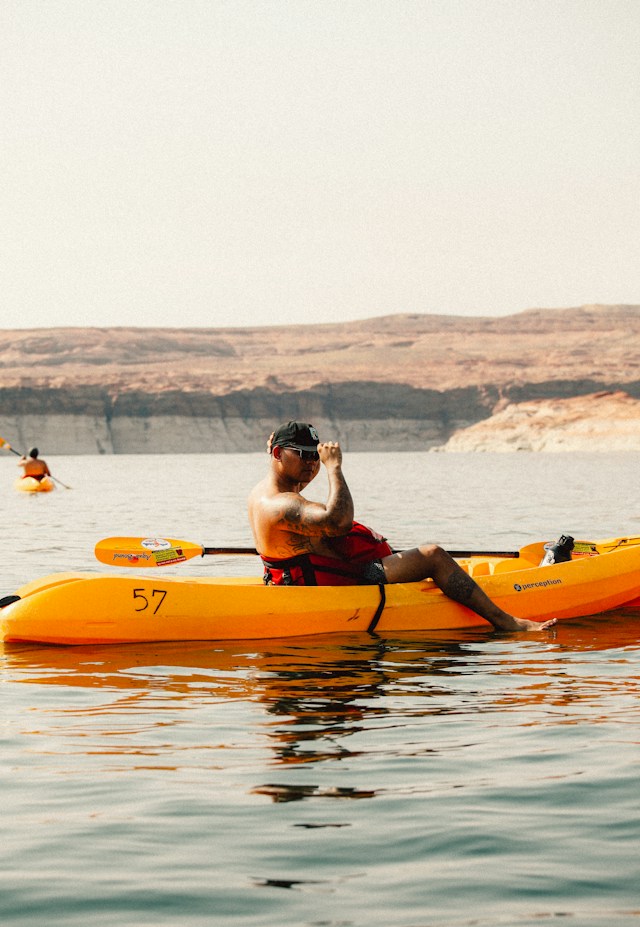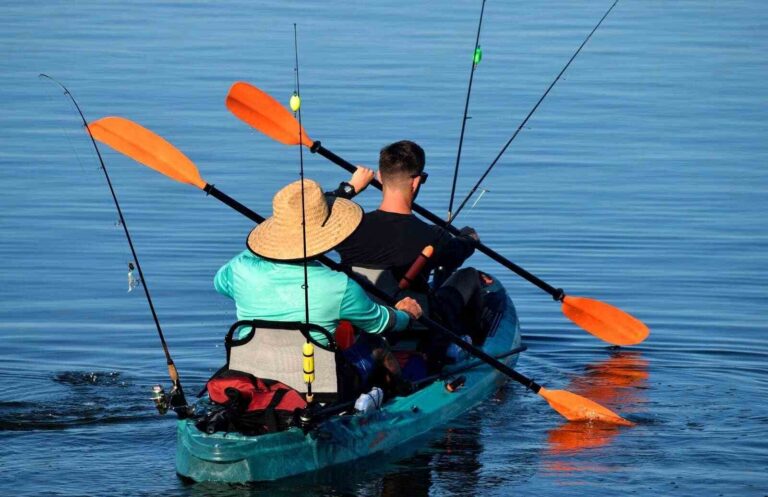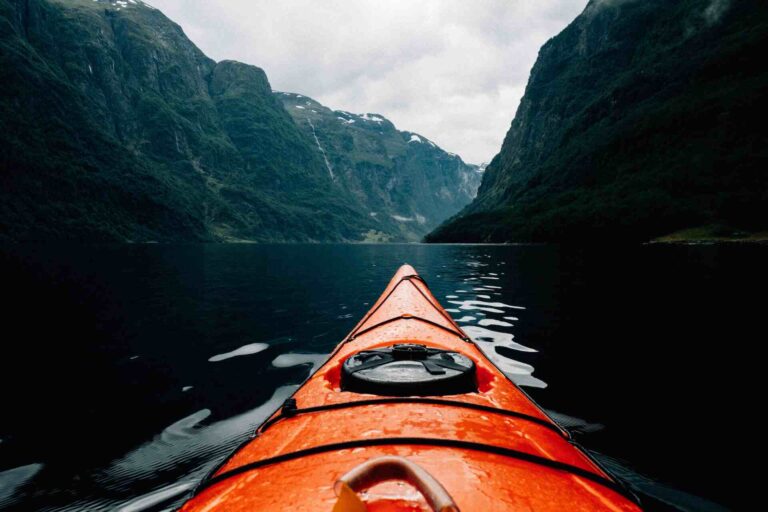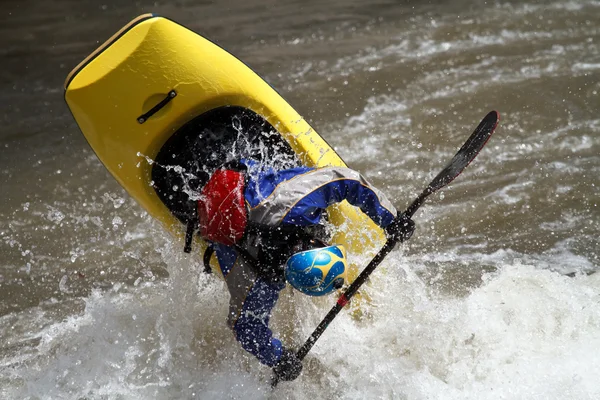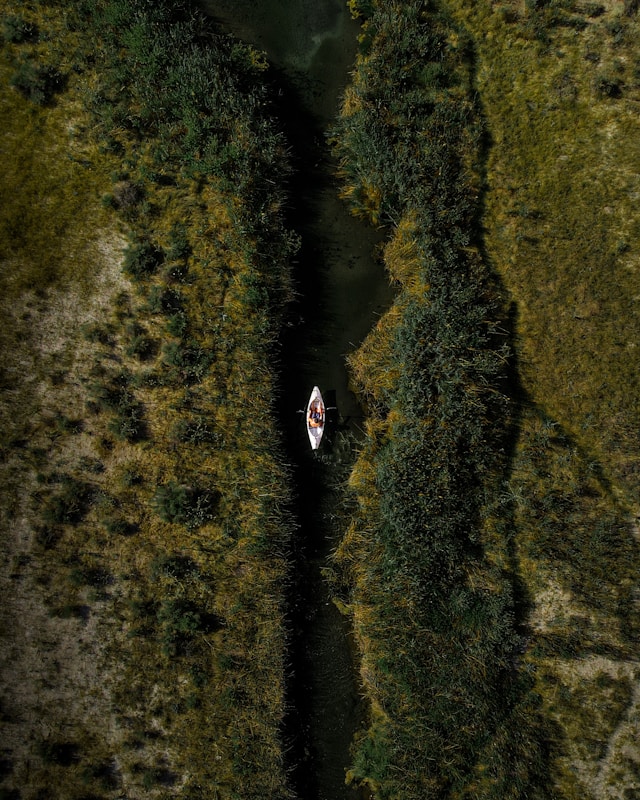How Deep are Kayak Pools? – A Simple Guide
How deep are kayak pools? Understanding the depth of your kayak pool is an important consideration for a safe and enjoyable experience.
In this article, we explore the various aspects of pool depths, their significance for kayakers, and safety considerations for both beginners and experienced kayakers.
As you navigate the world of kayaking, it’s essential to understand the different depth requirements for various activities.
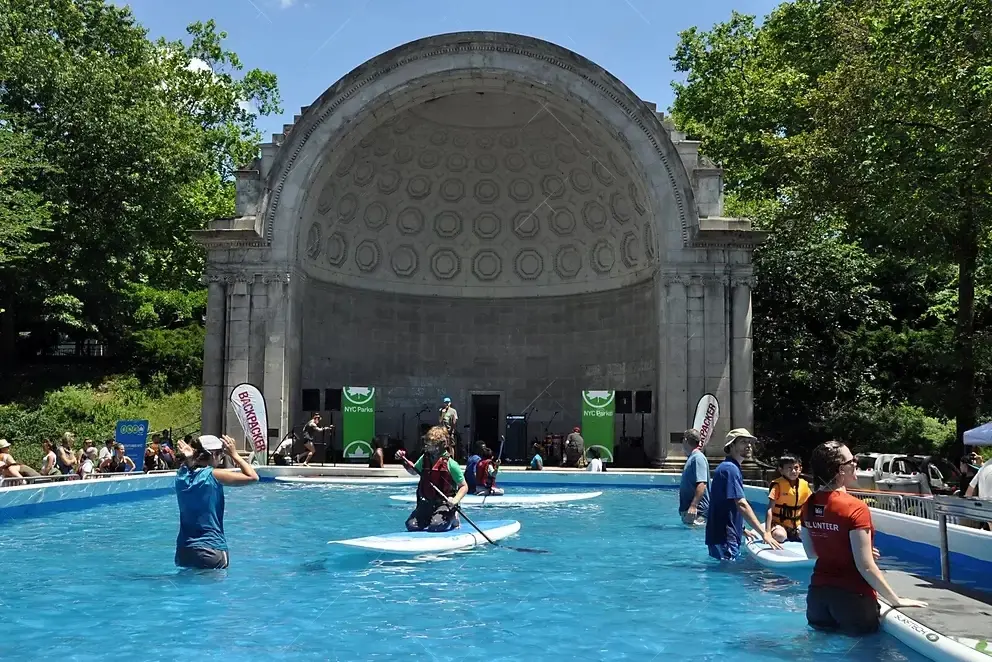
Whether you’re a seasoned kayaker or a novice, knowing how deep are kayak pools can help you choose the right pool to enhance your skills and achieve your goals.
How Deep are Kayak Pools?
When it comes to recreational kayak pools, standard depths usually range from 3 to 5 feet.
These common depths are specifically designed to cater to a wide range of skill levels, making them perfect for beginners and intermediate kayakers.
The depth of the pool matters, as it affects the maneuverability and skill development of kayakers.
Shallow pools are ideal for beginners to learn basic kayaking skills, such as balancing, paddling, and maneuvering.
On the other hand, deeper pools allow experienced kayakers to enhance their skills and practice advanced techniques, such as rolling, bracing, and sculling.
Most recreational kayak pools have a consistent depth throughout the pool.
This consistency creates a safer environment for kayakers, providing a stable and predictable water level.
Additionally, it allows the kayaker to focus on developing their skills without having to worry about sudden changes in the water level.
Understanding the common depths in recreational kayak pools will help you make informed decisions about where to practice and enhance your kayaking skills.
Deep Water Training Pools for Advanced Kayakers
If you’re an experienced kayaker looking to hone your skills and take your abilities to the next level, you may want to consider specialized pools designed for advanced training.
These pools, often called deep water training pools, offer unique benefits to kayakers seeking to improve their abilities in deeper waters.
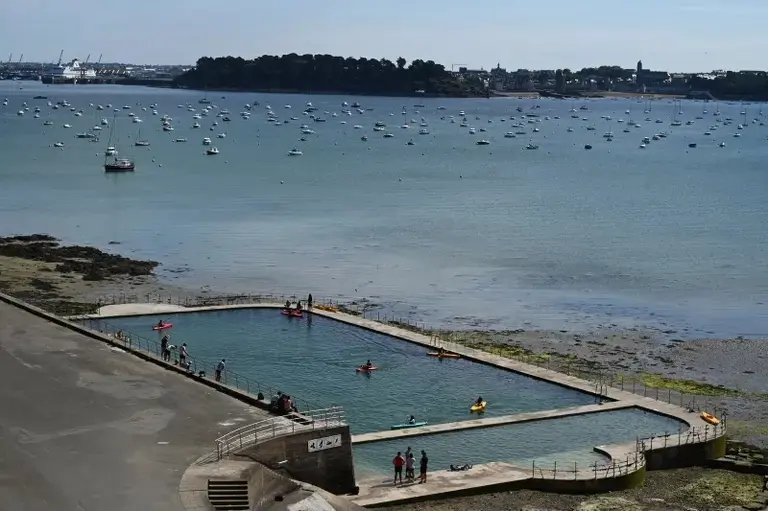
The Benefits of Training in Deeper Waters
One of the most significant benefits of using deep water training pools is the ability to practice advanced techniques.
In deeper waters, kayakers have more room to maneuver and can practice more complex moves such as rolling or bracing.
Additionally, kayakers can work on developing their strokes and techniques without worrying about shallow water hazards such as rocks or logs.
Training in deep water also helps kayakers build their confidence and adaptability.
By practicing in different depths, kayakers can become more comfortable in varying environments and develop the skills needed to navigate different water conditions.
Safety Considerations
While deep water training pools offer many advantages, they also come with unique safety considerations.
Kayakers must be aware of the depth of the pool and ensure they have the skills to operate safely in deeper waters.
Additionally, proper safety equipment such as helmets and life jackets should always be worn when kayaking in deep water training pools.
It’s also important to be aware of any pool rules or guidelines for using deep water training areas.
Some pools may require specific certifications or training before allowing kayakers to use deeper areas.
Incorporating deep water training pools into your kayaking routine can be a great way to enhance your skills and build your confidence in deeper waters.
Just be sure to take the necessary safety precautions and follow any pool guidelines to ensure a safe and enjoyable training experience.
Shallow Water Pools for Beginners and Learning
If you’re just starting out as a kayaker, it’s important to build confidence and develop basic skills in a safe and controlled environment.
That’s where shallow water pools come in. These pools are specifically designed for beginners and learning purposes, offering a comfortable and approachable space to get started.
The Advantages of Shallow Water Pools
Starting in shallow water has many advantages for novice kayakers. The most important of these advantages is building confidence.
When you’re just starting out, it’s easy to feel overwhelmed and unsure of yourself.
But shallow water pools allow you to ease into the sport, gaining confidence with each success.
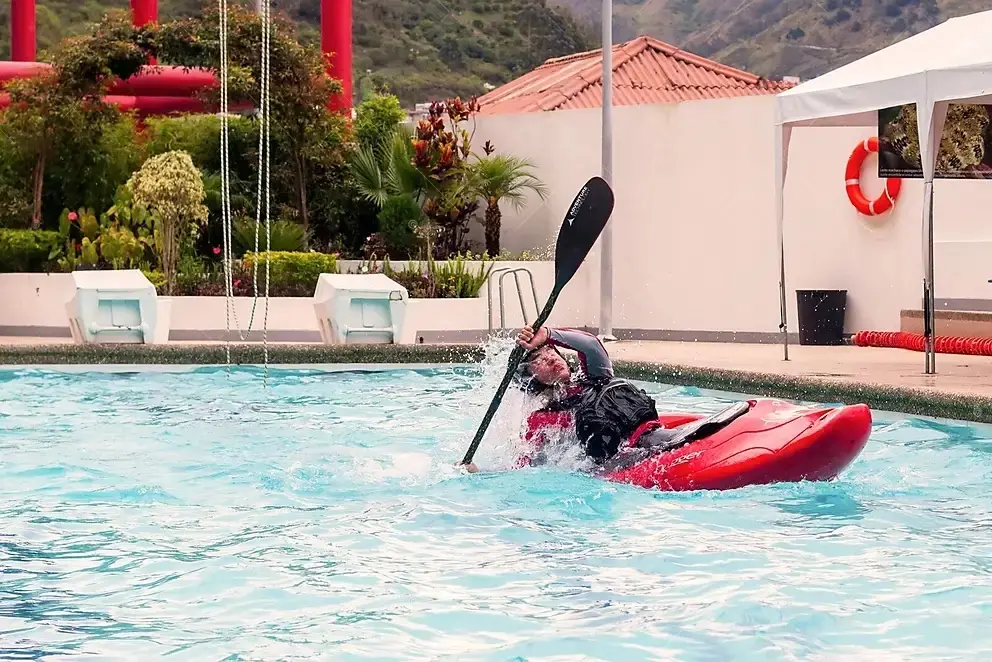
Shallow water also makes it easier to develop basic skills, such as paddling techniques and balance.
When you’re in deeper water, there’s more room for error, and it can be more challenging to maintain balance and control your kayak.
Shallow water provides a stable platform for practicing these skills until you’re ready to move on to deeper water.
Safety Considerations for Shallow Water Pools
While shallow water pools are generally safe for beginners, there are still some important safety considerations to keep in mind.
One of the biggest risks in shallow water is hitting the bottom.
Always be aware of your surroundings and keep your paddles close to the surface of the water to avoid hitting the bottom.
It’s also important to wear a life jacket, even in shallow water.
Accidents can happen, and it’s better to be safe than sorry.
Additionally, consider taking a beginner’s kayaking course to learn proper safety techniques and procedures.
Building Confidence in Novice Kayakers
Ultimately, the goal of starting in a shallow water pool is to build confidence and develop basic skills, setting you up for success as you progress in the sport.
Take advantage of the controlled environment to practice your paddling techniques, work on your balance, and build your confidence.
Before you know it, you’ll be ready to tackle deeper water and more advanced skills.
Depth Requirements for Various Kayaking Activities
When it comes to kayaking, different types of activities require different pool depths to ensure a safe and enjoyable experience.
Whether you are a beginner or an experienced kayaker, you need to be mindful of pool depths before diving in.
Pool Depths for Whitewater Kayaking
Whitewater kayaking is a thrilling activity that involves navigating through rough, fast-flowing waters.
The pool depths for whitewater kayaking typically range from 4 to 6 feet, depending on the intensity of the rapids.
It is important to note that kayakers should have advanced skills and experience in this type of kayaking before attempting it in deeper waters.
Pool Depths for Touring Kayaking
Touring kayaking involves exploring open waters such as lakes, rivers, and oceans, often over longer distances and with the goal of sightseeing or reaching a particular destination.
The pool depths for touring kayaking typically range from 3 to 5 feet, depending on the water conditions and currents.
This type of kayaking requires intermediate to advanced skills and experience in handling different water environments.
Therefore, it is important to choose a kayak pool that meets the requirements for your kayaking activity.
Choosing the wrong pool depth can result in a dangerous and unpleasant experience. So, be sure to do your research and consult with professionals before making a decision.
Adapting to Different Depths During Kayaking Sessions
As a kayaker, you’ll likely encounter pools with varying depths, and it’s important to adapt your techniques accordingly.
Here are some tips for kayaking in pools of various depths:
Start with Shallow Pools
If you’re new to kayaking or still building your skills, it’s best to start in shallow water.
Shallow pools allow you to practice basic techniques, like paddling and turning, with more control and less risk.
As you gain confidence and skill, you can gradually move on to deeper pools.
Adjust Your Technique for Deeper Pools
Deeper pools require different techniques than shallow ones.
To maintain stability in deeper water, sit up straight and keep your weight centered.
Use a wider paddle stance and focus on keeping your paddle close to the water to reduce the risk of capsizing.
It’s also important to be aware of the boundary between shallow and deep water.
When transitioning from shallow to deep water, adjust your technique gradually to avoid losing balance.
Be Mindful of Safety Precautions
When kayaking in deeper pools, take extra precautions to ensure your safety.
Wear a life jacket at all times and be aware of the pool’s safety features, like emergency exits and rescue equipment.
Never kayak alone in deep water and always have a buddy or lifeguard nearby.
Practice, Practice, Practice
Finally, the best way to adapt to different pool depths is by practice.
As you gain more experience, you’ll learn to adjust your technique instinctively and confidently.
Keep practicing in pools of varying depths to become a skilled and adaptable kayaker.
By following these tips, you’ll be well-equipped to handle pools of varying depths and enjoy a safe, enjoyable kayaking experience.
Selecting the Right Pool
If you’re looking to purchase or use a kayak pool, choosing the right one is an important decision.
Here are some key factors to keep in mind when selecting a pool, based on depth:
Your Skill Level
It’s important to select a pool that matches your skill level.
If you’re a beginner, consider a shallow water pool to build your confidence and develop basic skills.
Advanced kayakers may require a deeper pool for practicing advanced techniques.
Your Kayaking Goals
Keep your kayaking goals in mind when selecting a pool.
Are you planning to use your kayak for touring or whitewater kayaking? Pools for these activities may require different depths.
Pool Dimensions
The width and length of a pool are also important factors to consider.
A wider and longer pool will provide more space for practicing skills and maneuverability.
Safety Considerations
Always prioritize safety when selecting a pool.
Be sure to choose a pool that has safety features such as a non-slip surface and safety ropes.
Additionally, ensure that the pool depth is appropriate for your skill level and kayaking goals.
Budget
Lastly, your budget is an important consideration.
Keep in mind that larger and deeper pools may be more expensive.
Make sure to weigh the cost against the benefits you will get from the pool you select.
By considering these factors, you’ll be able to select a pool that is right for your needs and goals.
Remember that choosing the right pool based on depth considerations is crucial to ensuring a safe and enjoyable kayaking experience.
Beyond Pool Depths
When considering kayak pool options, it’s important to take into account factors beyond just depth.
The width and length of a pool also play a significant role in providing a holistic environment for your kayaking experience.
Width:
The width of a pool can affect the maneuverability of your kayak and impact the types of exercises you can perform.
A wider pool provides more space for practicing turns and maneuvering around obstacles.
On the other hand, a narrower pool can help build your precision and control as you navigate through tighter spaces.
Length:
The length of a pool also affects your kayaking experience.
A longer pool provides more opportunity for continuous paddling and practicing endurance.
It can also accommodate more kayakers at once, making it a great option for group sessions or races.
A shorter pool, on the other hand, allows for more focused and intense training on specific skills and techniques.
Overall, the width and length of a pool contribute to the overall environment and experience.
It’s important to consider these factors alongside the depth when selecting a pool that meets your specific needs and goals.
Understanding the depths of kayak pools is crucial for any kayaker, regardless of their skill level or the activity they pursue.
As we have discussed, there are various types of pools, each with its own depth requirements and safety considerations.
Summary of Kayak Pool Depths
In summary, the standard depths of kayak pools in recreational settings range from 3 to 5 feet, with some pools reaching up to 12 feet for advanced training.
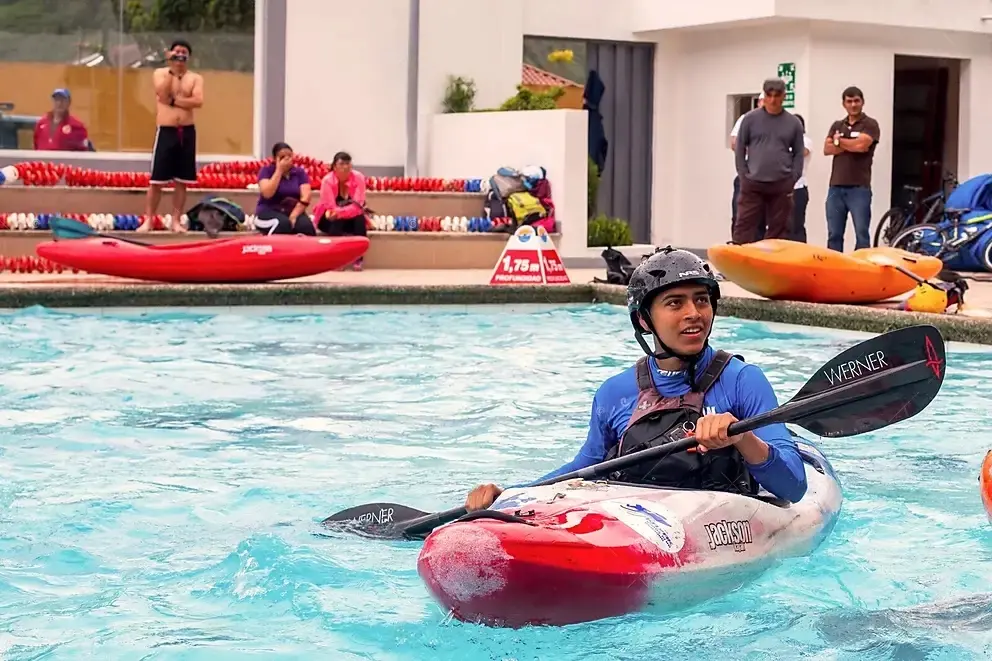
Shallow water pools are ideal for beginners, whereas deeper pools cater to more experienced kayakers seeking to enhance their skills.
It is essential to note that different kayaking activities require varying pool depths, with whitewater kayaking requiring deeper waters compared to touring kayaking.
Important Considerations for Depth Requirements
When selecting the right pool for your needs, it is essential to consider your skill level, kayaking goals, and the type of activity you plan to pursue.
Adapting to different pool depths during kayaking sessions requires adjusting your techniques and being mindful of safety precautions, especially when transitioning between shallow and deep water.
Ultimately, understanding and being mindful of kayak pool depths play a significant role in ensuring a safe and enjoyable kayaking experience.
Consider the information presented here when making informed decisions about your pool choices, and always prioritize safety.
Conclusion
By considering factors such as standard depths, specialized training pools, shallow water options for beginners, and depth requirements for different kayaking activities, you can make informed decisions when selecting a pool that aligns with your goals and skill level.
But don’t forget that a holistic environment and facilities, such as pool width and length, also contribute to a comprehensive kayaking experience.
Be sure to consider these factors as well.
Now you’re ready to hit the water and put your newfound knowledge of kayak pool depths into practice.
What is the average depth of a pool?
The average depth of a pool typically ranges from 3 to 5 feet (0.9 to 1.5 meters) for residential pools and can go up to 12 feet (3.6 meters) for more commercial or competition pools. The depth can vary depending on factors like the purpose of the pool, the space available, and local regulations. It’s important to note that pool depths can also be customized based on individual preferences and needs, such as having a shallow area for children or a deeper section for diving.
Can kayak pools be salt water?
Yes, kayak pools can be converted to saltwater systems. While originally designed for use with traditional chlorine-based systems, kayak pools can be adapted to saltwater systems by installing a salt chlorinator. The salt chlorinator uses salt to generate chlorine, providing a more natural and low-maintenance alternative to traditional pool sanitization methods. It’s important to consult with a professional or the manufacturer for specific instructions on how to convert your kayak pool to a saltwater system to ensure proper installation and maintenance.
How much does a 16×32 Kayak pool cost?
The cost of a 16×32 Kayak pool can vary depending on several factors such as location, features, accessories, and any additional installation requirements. Generally, the price range for a 16×32 Kayak pool can start from around $10,000 and go up to $30,000 or more. It’s recommended to contact a local Kayak pool dealer for an accurate and detailed cost estimate based on your specific requirements and desired features.
How to close a Kayak pool for winter?
Closing a Kayak pool for winter involves several important steps to protect the pool and equipment from damage caused by freezing temperatures. Here is a summary of the process:
Balance the water chemistry: Test and balance the water chemistry to the appropriate levels. Adjust the pH, alkalinity, and sanitizer levels as recommended by the manufacturer.
Clean the pool: Thoroughly clean the pool, including skimming the surface, vacuuming, and brushing the walls and floor.
Lower the water level: Lower the water level to below the skimmer mouth but above the return jets. This helps prevent freezing and potential damage to the pool.
Drain equipment: Drain the pool equipment, such as the pump, filter, and heater, following the manufacturer’s instructions. Remove any drain plugs as required.
Winterize plumbing: If your Kayak pool has plumbing lines, you’ll need to blow out and plug the lines to prevent freezing and bursting. Use an air compressor or a pool winterizing kit for this process.
Cover the pool: Securely cover the pool with a winter pool cover, ensuring it is well-fitted and tightly sealed. This helps keep debris out and provides added protection during the winter months.
Winterize additional accessories: If you have additional accessories like ladders, slides, or diving boards, follow the manufacturer’s instructions to safely remove, clean, and store them for the winter.
It’s important to note that these steps are a general guideline, and it’s recommended to consult the specific instructions provided by Kayak or a professional pool service to ensure proper winterization for your specific model.


